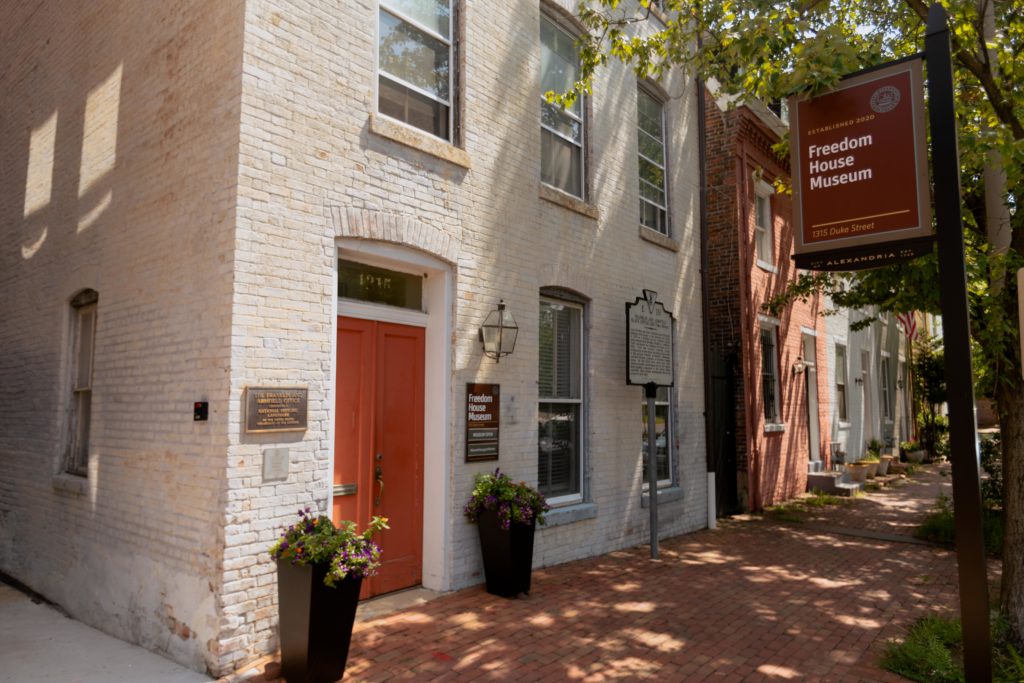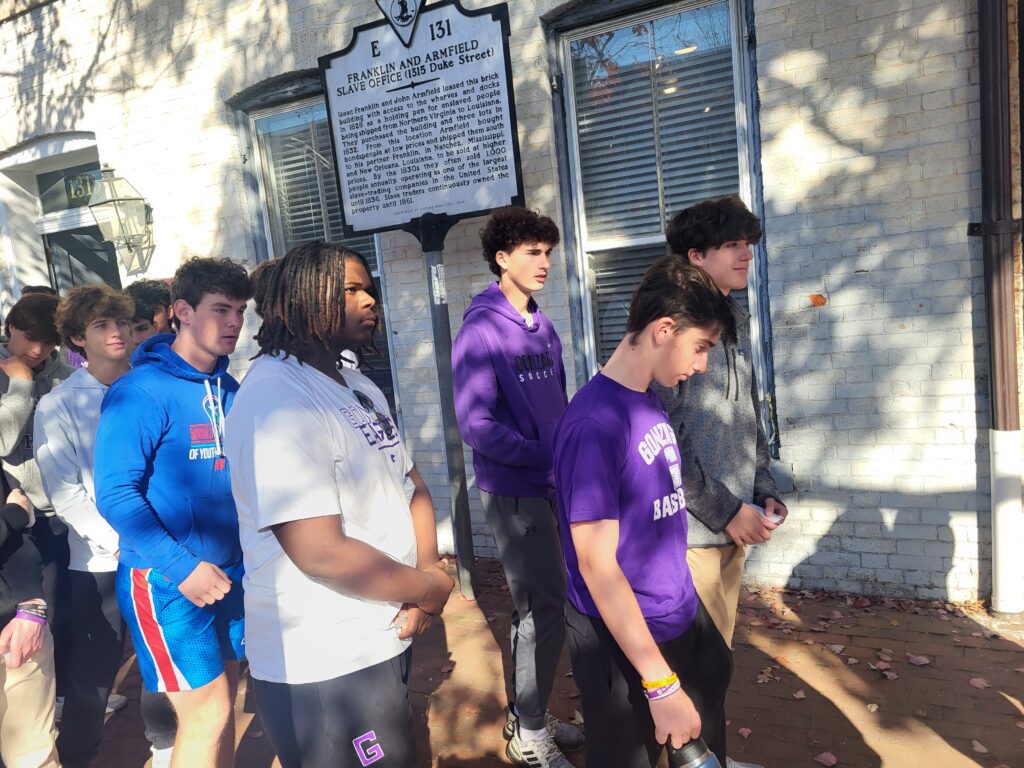Slavery’s Connection to DC High School Explored in Traveling Exhibit, Now on Display at Alexandria’s Freedom House Museum
See 'Searching for Truth in the Garden' through April 15, 2024

ALEXANDRIA, VA-Seven years ago last month, a group of Gonzaga College High School students went to a lecture by Adam Rothman, a history professor at Georgetown University. That day, he shared with the audience the research he conducted as part of the university’s Working Group on Slavery, created to study Georgetown’s connection to slavery. (It includes the sale of 272 enslaved people in 1838, who belonged to the Jesuit priests there.) Hearing of the university’s effort to confront a dark time in their history, some of the Gonzaga students who attended Rothman’s lecture were inspired to look into their own school’s past.
The research of these seven students led to a traveling exhibition now on display at the Freedom House Museum (1315 Duke St.) in Alexandria. A press release detailing the research explains the significance of the location to the enslaved who worked at Gonzaga (then known as Washington Seminary) nearly 200 years ago.
They were “sold to the slave dealer on Duke Street, then marched down to the river in chains and loaded aboard a ship to be taken to the deep south to be resold,” according to the release.
To tell the story most effectively, the students – who conducted their research over six weeks during the summers of 2017 and 2018, using Georgtown’s archives at Rothman’s invitation – decided to focus on a 13 year old named Gabriel Dorsey. He worked in the garden at Washington Seminary.

This project, undertaken with assistance from History professor Ed Donnellan, led to the discovery of artifacts and documents such as accounting books, written histories, and other papers related to the seminary, then located F St., NW. It moved to its current location at 29 I St., NW in 1871, and was located on the same block as St. Aloysisus Church (named for Saint Aloysius Gonzaga; hence, the name change.)
Looking through the accounting books, the students found references to Dorsey and others he may have known. They also saw evidence that the Jesuits were given food and a portion of the proceeds from Jesuit-owned plantations in Maryland.
In an email to The Zebra Press, Bill Dickinson, who accompanied the students on a tour of Freedom House Museum in early November, explained that the money earned from the sale of enslaved people “allowed Jesuit institutions in MD to financially survive” and support their educational institutions, like Georgetown and Gonzaga.

The exhibit, on display through April 15, 2024, examines Dorsey’s life, as well as the complex nature of slavery, and the reverberations of its impact. An Alexandria eNews bulletin says it “transcends mere exhibition; it represents an outstretched hand from Gonzaga, inviting the community to embark on a shared journey of understanding and reckoning with a pivotal chapter in American history.”
Before arriving in Alexandria, “Searching for Truth in the Garden” was on display at the high school and Ford’s Theatre.
“Their work,” said Audrey Davis, Director of the African American History Division in Alexandria, “shows how students can be inspired to go beyond textbooks to take a deeper dive into our history and bring to light the untold stories of the American historical narrative. With Gabriel, we learn about the horrors of the domestic slave trade, and [the] tragic life of one enslaved 13-year-old boy.”
Over two days last month, the young researchers retraced the footsteps of Dorsey and the 271 others who were sold by the Jesuits into slavery on Duke Street. They held multiple ceremonies of remembrance at the edge of the Potomac River so that everyone could reflect on what was learned and how this knowledge had changed them.
Looking at the water, as some recited poetry they had written, the group was fully aware that they stood where Dorsey and others waited in chains to board a slave ship, “ironically named The United States,” as Dickinson noted, for the long journey to Louisiana and Mississippi, where they would work on plantations for decades, some never knowing the freedom that came in the years after the Civil War.
CORRECTION: An earlier version of this article contained a quote that named Georgetown Visitation as a Jesuit institution. It is not. The school was founded by the Sisters of the Visitation. Though they owned and benefited from slaves, the group did not benefit from the sale of the Georgetown University’s 272. Visitation’s history is not connected to the university.
[SEE ALSO: Parking Rnforcement Program Designed to Make Old Town Safer]




